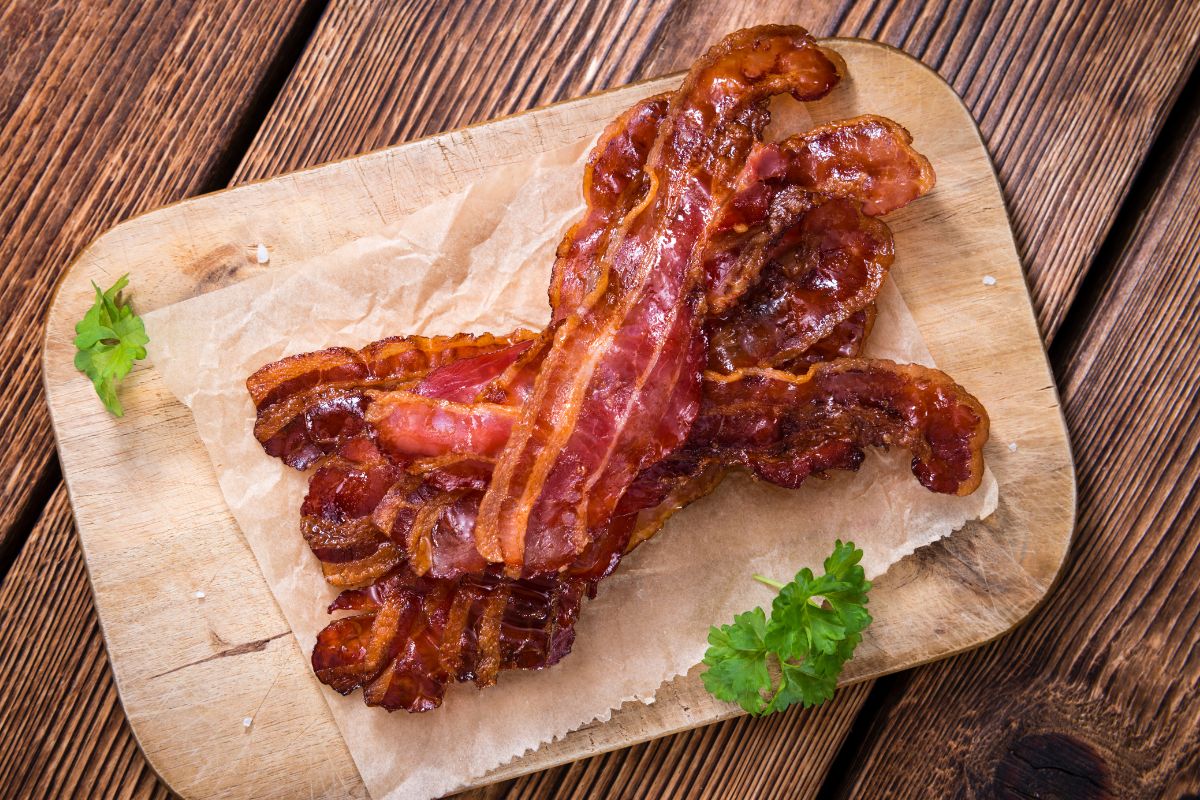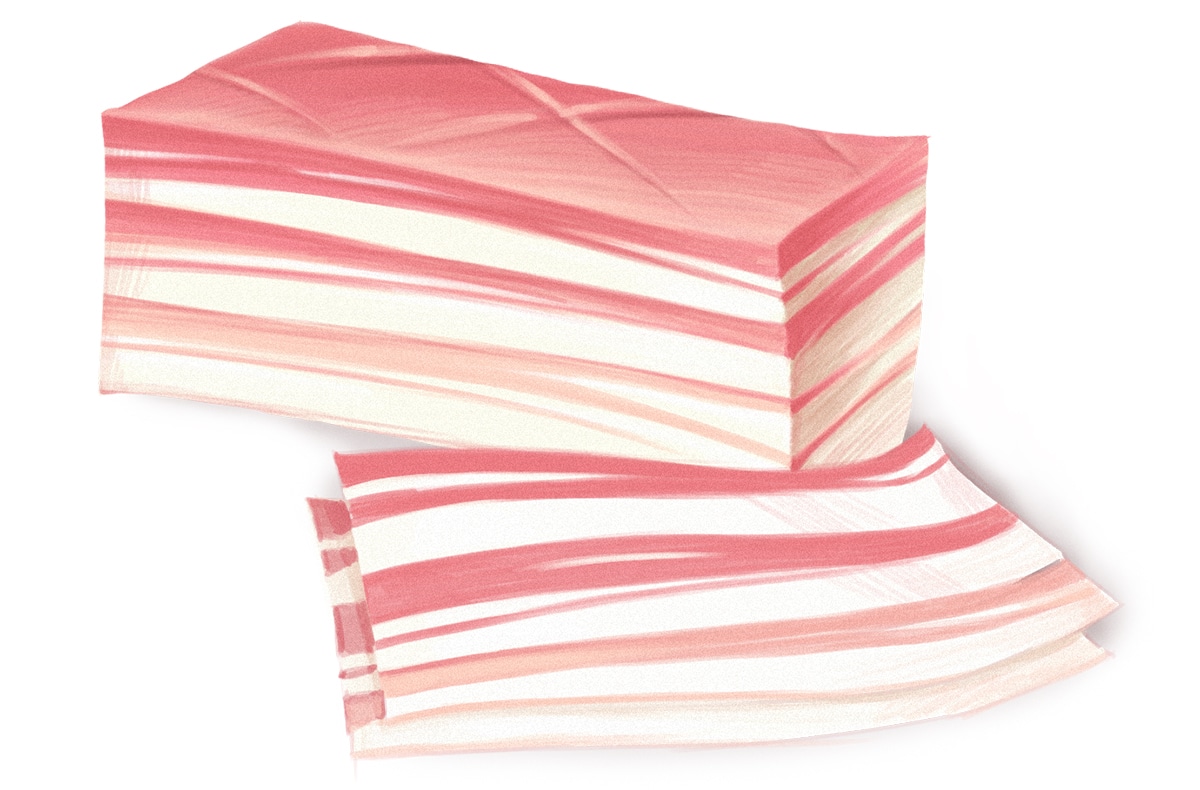
If you start by explaining Paleo as a diet high in fruits and vegetables and low in processed foods and refined sugar, most people will be totally on board. Start in on the animal fat, egg yolks, and red meat, and they’ll start getting skeptical. But if there’s one food guaranteed to bring out the dubiousness, it’s bacon.
Bacon is basically Exhibit A for all the things that are supposed to kill you. It’s full of fat – and not only fat, but animal fat. The parts of it that aren’t fat are animal protein. It’s salty. It’s processed. It’s smoked, which means it must be full of carcinogens. And it just tastes too darn good to actually be healthy.
Except that from a Paleo perspective, animal fat isn’t going to kill you, and neither is animal protein. Neither is salt, for that matter. “Processing” we’ll get to down below, and while there’s some truth to the smoking-carcinogen link, it’s not nearly that clear-cut.
That’s why bacon is Paleo, but just because Paleo includes some bacon doesn’t mean it’s an all-bacon diet. Debunking alarmism and crazy fearmongering about a food doesn’t imply that the food is healthy at all times, in all amounts, for all people, or under all circumstances. There is a huge middle ground between the two extremes, and that middle ground is exactly where Paleo is located.
“But Cavemen Didn’t Eat Bacon!”
Of course cavemen didn’t have bacon. They didn’t have pigs. The animals that we currently know as “pigs” didn’t exist until after the agricultural revolution, so if bacon isn’t Paleo because cavemen didn’t have it, neither are pork chops or any other cut of pork. And for that matter, neither are most of our fruits and vegetables. Broccoli didn’t exist until well after pork – it was cultivated about 2000 years ago – so by the “cavemen didn’t have it” logic broccoli must also be a dangerous and unhealthy food.
The “eat what cavemen ate” logic takes you to crazy places: we literally can’t eat what cavemen ate, because most of those foods no longer exist. So it’s really great that Paleo has nothing to do with trying to imitate cavemen! We learn from evolution about what types of foods we’re adapted to eating, and use that to make educated guesses and draw conclusions about types of foods in the modern world.
It’s not a game of prehistoric make-believe, and it doesn’t matter whether or not cavemen ate bacon. What matters is whether our bodies – which are still basically the same types of bodies that there were in the caveman days – do well with bacon or not.
The Demon of “Processing”
So bacon isn’t automatically out for Paleo purposes just because cavemen didn’t have it. But isn’t it a processed food? And isn’t that bad?
Unless you eat only raw, unwashed vegetables that you dug out of the ground with your bare hands, and raw meat that you ripped off the carcass with your teeth, all your food is “processed” in some way. Washing, cutting, and cooking are all forms of processing.
The question is not whether a food is “processed.” The question is whether the particular forms of processing a food has gone through actually make it unhealthy for humans to eat. So let’s take a look at bacon: what kinds of “processing” go into it, and are they dangerous? Here’s how traditional bacon is made:
- Start with a pork belly.
- Add salt and other spices. There’s nothing wrong with salt in reasonable amounts, and a Paleo diet low in processed foods gives you a lot more leeway for salt consumption. And spices are downright good for you.
- Add curing salt. This step gets a bad rap, but a lot of evidence actually suggests that there’s nothing scary about curing salt or nitrates.
- Let it cure.
- Smoke it. The big worry here is carcinogens from the smoke, but studies haven’t proven any actual danger at levels of smoke that a human might plausibly consume.
Traditional vs. Grocery-Store Bacon
That was the traditional way to make bacon. You can still easily find bacon made that way, especially if you get it from a butcher or farmer, or a specialty place where the bacon is made in-house. Unfortunately, you can also find bacon made with all kinds of other stuff – check the labels carefully for junk ingredients! Corn syrup does not magically become Paleo when it’s slathered on bacon.
“Not Deadly” Doesn’t Mean “Eat a Semi Truck Full.”
The recent research into salt, nitrates/nitrites, and carcinogens from smoke actually suggest that bacon isn’t actually a carcinogenic demon food. But on the other hand, even bacon advocates have to cop to a couple of points against it.
Omega-6 Fats
Omega-6 fats are a bit of a nutritional tightrope, because we need some of them, but getting too much Omega-6 is inflammatory. Most people in the modern world get too much Omega-6 fats, because they eat a bunch of highly processed seed oils.
3 slices of pan-fried bacon contain roughly 1 gram of Omega-6 fats. A typical Paleo target varies depending on your total calorie and Omega-3 intake, but it’ll probably fall somewhere between 4 and 8 grams per day. So Omega-6 is an argument for keeping the bacon to reasonable amounts, but not for eliminating it completely. That’s especially true if your bacon comes from factory-farmed pigs, since factory farming produces meat with a higher Omega-6 content, while pasture-raised pigs will have less.
Smoking and Carcinogens
The problem with smoking bacon is that the smoky flavor comes at the expense of some potential carcinogens. As noted above, intervention studies haven’t actually shown danger to actual humans from any amount of these compounds that they could reasonably get from foods.
On the other hand, there is an association between processed meats as an entire category of food and various cancers in humans. It’s possible that could be from the association between eating processed meat and other unhealthy behaviors, or from other junk in the processed meat; it’s not obviously caused by the smoking. Still, it’s probably prudent not to eat smoked meat in massive quantities all the time.
Cooking with Bacon, Paleo-Style

Bacon isn’t going to ruin your health in reasonable amounts, but that doesn’t mean it’s good for you in unlimited quantities. And healthy cooking with bacon is possible – here’s how to do it:
- Don’t use bacon as your only protein source at a meal. Instead, have it with eggs, or wrap it around a chicken breast or something else. This will let you eat enough protein for an actual meal, without getting a bacon overload.
- Try it as a condiment. Using bacon for flavor in egg dishes, roasted vegetables, or other recipes gives you a big burst of flavor for a relatively small amount of actual bacon.
- Make it yourself. DIY bacon is delicious (imagine being able to craft the flavor exactly to your specifications) and you’re in complete control of the ingredients. If you want an absolutely zero-sugar version, you got it. If you hate pepper, leave it out.
Summing it Up
Nutritional absolutes are very tempting, because they make everything so simple. Unfortunately, they’re almost always misleading: in reality, it’s all about having a reasonable sense of proportion, and an understanding of the risks and benefits that isn’t wildly exaggerated one way or another.
Bacon gets demonized for the combination of salt, fat, animal protein, smoking, and curing, but actually all those things are more complicated than “they’ll kill you slowly.” That’s why bacon gets a spot on the Paleo menu, in reasonable amounts – use it for flavor and save the bacon pizza crust for rare and special occasions.





Leave a Reply